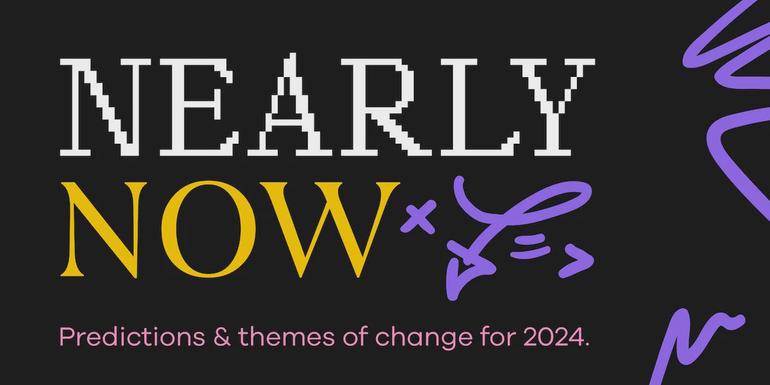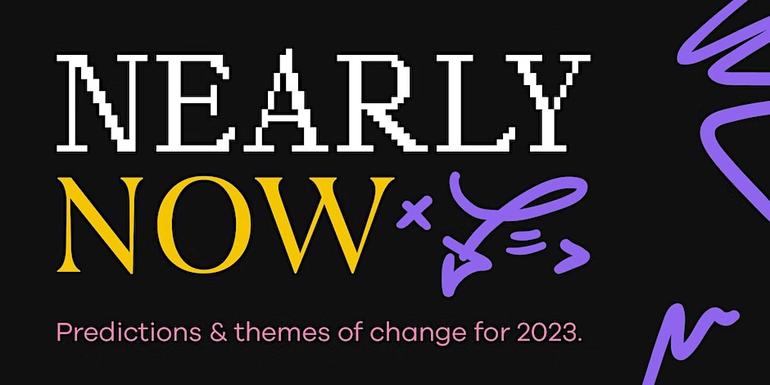
Customer-Led Transformation
What Is a Customer-Led Transformation and How to Get Started
Every organization is started to solve a customer problem. Nike was started because existing shoes were not good enough for high-performance runners. McDonald’s was started to provide fast and consistent foods to America’s growing middle class.

So, how do they do it? The simple answer is: customer-led transformation. Sustained success and sustainable growth happens when organizations re-center themselves on servicing their customers. Not only does this reinvigorate their teams, it allows them to work more efficiently by aligning around a shared goal.
What Is a Customer-Led Transformation?
Being customer led is a statement on how priorities are decided and decisions made inside your organization. A Customer-Led Transformation is the process of going from your current state to one where teams work across silos to meet customer needs.
Later in this piece, we will touch on the hardest part of a transformation, getting started. A Customer-Led Transformation takes the following steps:
- Reframe – Understanding your market and business from a customer perspective, rather than the perspective of a set of products. There are various ways to gain this understanding from ethnographic research to surveys, market research, or talking to front line staff
- Strategize – Converting new customer insights into a strategic vision that aligns your capabilities with customer needs to drive meaningful growth
- Align – Ensuring every part of your organization shares the same understanding of who the customer is and their needs, and the new strategic vision

Why Your Organization Needs a Customer-Led Transformation
Faculty of Change has learnt the value of these transformations first hand. One of our asset management clients went from 3 years of flat growth to 10 consecutive quarters of growth after undertaking their transformation. Adobe has had a cumulative annual growth rate of 29% since 2009 as a result of this focus on enabling creators (vs. selling them software) with the creation of the Creator Cloud tools. One of our retail clients has reversed a slide in same store sales, mid pandemic, by refocusing on its customers. There is an Australian debt collection startup that incentivizes its team members on the ratings they get from customers – they now have over 600 5-star reviews on Google. And the list could go on…
The fastest growing organizations have two things in common. First, they prioritize the customer above everything else. Second, they do that at scale.
Industry leaders and fast-growing organizations are the ones that place the experience of the customer ahead of all else, and have done so at scale. Uber and Amazon ignored or flaunted existing regulations or norms to create seamless customer experiences. New financial institutions like Stripe and Oscar demonstrate through their product that they think in terms of people, not products.
Stripe has removed all the complexity of payments into a couple of lines of code any organization can integrate into their experience. By allowing business owners to focus on their core business, not payments, Stripe is responsible for over a third of all internet transactions. The goal of most health insurance organizations is to improve the experience of filing a claim. Oscar is making claims obsolete so its customers get benefits faster. Compare those to incumbent leaders that are experiencing deteriorating market share at the hand of startups and new entrants.
Once you start a Customer-Led Transformation, you will experience:
- Faster time to market for new ideas because you are focused on delivering value, not internal squabbling
- A recharged team inspired by the change they can make
- Easier alignment of teams and decision making, the core problem is always based on improving your customer’s life. . How does this initiative improve the life of the customer?
The concept of Customer-Led Transformation seems so simple. If a business is not centered around its customer, what is it centered around? Even though it seems obvious, most organizations have not even begun the journey – which means the opportunities are ripe for those who do.

How to Start a Customer-Led Transformation
Customer centricity is a journey that you are always on. Each capability builds on the other to accelerate the transformation. Getting started can feel like an ordeal before you begin, so we’ve highlighted a set of focus areas that serve as a map for you to follow. Below are the six essential elements your organization and teams need to align around to successfully deliver a Customer-Led Transformation:
- Customer Vision and Strategy – Does everyone in your organization know who your customer is and what it is they need? Do you have a shared understanding of how you plan to meet those needs?
- People and Culture – How does your customer inform your culture and teams? Are your teams siloed around operational functions or are they cross functional and tied to customer needs?
- Ability to Design and Deliver – Can you act on changing needs? Does your organization have capabilities for converting insight into new experiences or products? Are there people inside of your organization capable of taking on a product or customer segment ownership role?
- Segments/Customer Knowledge (Data) – How are customers activities being tracked? Are they being regularly consulted as part of customer channels? Is there feedback or experience being accounted for in planning?
- Measurement and Iteration – How is customer data being used to guide future development and decisions on sunsetting? Do you make decisions about what the customer has told you or what you believe to be true about their interests?
- Agile Teams and Management – Do your efforts and organization evolve around the needs of your customer or your organizational functions? Do you divide yourself into “Business”, “IT”, and “Operations” or divisions that are organized to deliver value to your customers?

When is the Right Time to Start a Transformation? Now.
You need to bring on employees that are going to be useful tomorrow, not just today.
Often, organizations feel that talent or capabilities are a limit to transformation. “My team was great to take us from A to B, but they’re not the right team to take us forward,” is a common refrain. We also hear “once I bring on my new C?O, I want them involved in setting the strategy.”
Without a clear idea of where you are going, it is difficult to identify the right capabilities. You want to bring on individuals aligned to your vision and direction (i.e. committed to your customer) as opposed to team members aligned to your current business.
As such, there is never “a right time” to explore a Customer-Led Transformation. If you do the work of understanding who your customer is, their needs, and lived experience, you can more efficiently build your organization because:
- You will have a clearer vision of the roles you need filled and what is expected of them
- Through retaining and elevating existing talent you save institutional knowledge and reward people who know how to get things done inside of your culture
- New team members will be able to learn from an existing body of knowledge, not spending their first six months “learning what they don’t know”
- Gaps will be mapped between current capabilities and your future direction, allowing you the opportunity to create career paths for existing team members that might not have existed otherwise

Help! My Leaders Do Not Understand the Need for Transformation
Transformation projects are often pitched as leaps of faith or an exercise in comparables. “How can being customer centric not be better than what we have today?” Or “look at what happened to dominoes share price once they decided to focus on the experience vs. the pizza?”
This does not need to be the case. Begin with an analysis of your customer and borrow a metric from startups: lifetime value of the customer. Often our clients think in terms of basket size or revenue per customer. These metrics only apply to how the client can currently transact with you.
Do your homework (i.e. speak to some customers, Google, and generalize) to identify what they are spending across adjacent categories and categories that might one day be adjacent to yours. For example, if you are a retail bank currently offering savings, chequing, and credit card products. Your analysis of potential lifetime revenue from this client should include investment products, mortgages, auto finance, etc. Also include some stretch products like legal fees, trusts and estates, money transfer fees, personal finance software spending, etc.
By better understanding what your customer is spending overall (vs. what they are spending with you), your organization will have a better idea of what you can grow into through a transformation. Through a Customer-Led Transformation, you will likely verify some of those ingoing hypotheses and dismiss others – this is where the true value and importance of research shows.

How Do We Align Around a Shared Understanding of Our Customer?
Regardless of where you find yourself on the journey of being Customer-Led, it is essential that your organization be aligned universally around a vision of your customer.
At the outset of most of our engagements, our clients have an operational focus and strategy. “We are Norway’s leading manufacturer and retailer of Widgets” or “we are Latin America’s bank for business owners.” They have been operating for years successfully and continue to drive growth and profitability through improving specific functions (e.g. reducing call center volumes or adding on new stores). They recognize that these methods will not be as viable in the future and are looking for “what’s next.”
This Strategic Reframe, once implemented, is a key tool and crucial step for aligning leadership around a Customer-Led vision and transformation. Leadership across your organization needs to be aligned because real transformative change can only happen if it happens across the entire organization. If it happens piece meal in silos, there is duplication of effort and wasteful spending.
Storytelling for Internal Alignment
We have uncovered two tools that are most helpful for aligning an organization for an effective Customer-Led Transformation: empathy and future-state definition. We refer to these as Insights and Growth Platforms.
Empathy/Insights: With customer feedback incorporated into decision making, there is no need for anyone in your organization to trust your opinion as they can hear it directly from the customer. To gain these insights you can quickly use quantitative surveys (from online panels, which can be very cost effective but narrow) or qualitative work (which can be more expansive and useful, but take longer to accomplish).
For more effective internal alignment, invite key stakeholders to sit on customer research activities, record them if your subjects give you permission, and include quotes and stories wherever possible. If you are really constrained, pull from online reviews or social media posts about your organization or product. Once you are able to establish the authority of the customer voice in guiding decision making, you are well on your way to a successful transformation.
Future-State Definition/Growth Platforms: A truly successful team is one that is motivated by the future, but inspired by the past. The more clearly you can define the future direction of the organization (be it what you will do or what role you play in your customer’s lives) the better your teams can tangibly see themselves as drivers of success. Having a clean picture allows teams to identify how they can contribute and take ownership. Additionally, a customer-centric Growth Platform cuts across silos and builds shared accountability.
Driving External Alignment in Customer-Led Transformation
Internal alignment is the most important driver of a successful transformation. That being said, there is a role for those outside of your organization to play. With our clients, we have primarily focused on shareholders and partners. Startup ecosystems and regulators can also be key external parties to incorporate into your vision.
Shareholder Alignment – Oftentimes, shareholders are the last ones to find out about a transformation journey. They are informed about the end impacts of the initiatives that might flow out of it. This does them a disservice. By properly bringing them along for the journey, you give them a chance to assign value to the transformation (and its future impact on cash flow). You will also likely need to shift how you report on performance. Bringing shareholders in early will allow them to adjust their picture of your organization and evolve as you do. Similarly, buy-in at the shareholder level will embolden the board and leaders to drive the transformation.
Partner Alignment – Sharing your vision and transformation plan with vendors and other partners allows you to augment your capabilities with experts, ensuring everyone is ready when you need them. These partners can also provide feedback and input based on what they see in their corner of the markets or from their own interactions with your customers.
Conclusion: Getting Buy-In for a Customer-Led Transformation
Getting an organization to agree to undergo a Customer-Led Transformation is not a decision that is taken lightly or quickly. It may take years for executives or a board of directors to come around. There are ways to build momentum and shorten that time frame:
1. Start with the Customer – Use their voice and experience to make the case for change
2. Tie Back to End Value – Paint a picture (with data where possible) around what the future will look like and how the benefits exceed the pain of the journey of getting there
3. Measure Success and Tell Stories – Use your own momentum to build buy in. As Customer-Led initiatives move forward, share stories with the organization about their success and use them to rally more champions to the cause



